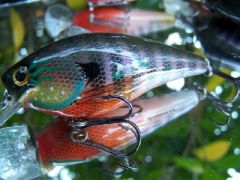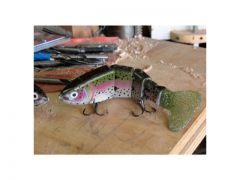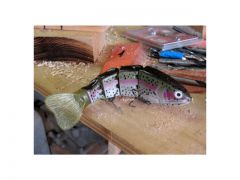Hmmm.....let me see if I can sound intelligent at 4:00 in the morning.
All wood has some moisture. Even kiln dried.
If you have any "free" moisture in a wooden lure, it will make the finish fail because it will cause the wood to expand and contract too much when the temperature changes. Most finished can't stand up to too much movement.
Air dried wood which has reached the same relative humidity (moisture content) as the surrounding air is pretty stable, as long as you don't live in a really humid area, where relative humidity is high all the time, like the tropics. But it still has more moisture than kiln dried, unless it's been sitting in the desert. That's actually a problem when people in Arizona buy wood products like furniture and pianos from other parts of the country. The wood dries out more in their dry climate, and the joints open up, even kiln dried wood in furniture. The outer layer of kiln dried lumber is exposed to the moisture in the air surrounding it where it's stored and milled, so it can dry out when it gets shipped to the desert areas.
But wood that's kiln dried is more stable, less susceptible to movement, than air dried wood, because it is not only lower in moisture content, but the process of kiln drying seems to keep the moisture content low if you store it inside.
If you seal the wood well before you paint and topcoat it, you eliminate the wood movement headaches.
I've settled on using Minwax Wood Hardener as a sealer for my wood lures after I've carved, sanded, and drilled them with all the holes for hinges, ballast, hook hangers and line ties. It's a penetrating sealer that is drawn into the pores of the wood and reinforces their cellulose structure by coating it with something. Don't remember what.
The softest wood I use is sugar pine, which is buoyant and easy to carve, and the hardener makes it strong enough to hold hardware.
I pour some into a coffee can, drop in the lure parts one at a time, slosh them around for about ten seconds, and then drip them out over the can for another ten seconds and hang them to dry for a day.
Even though the wood hardener wicks into the cells of the lure (you can see the air bubbling out of the end grain as it's displaced) and down into any holes that I've drilled, I still use glue on my screw eye threads.
I know Snax has found a better hardener product, but I've found the Minwax works for me. I use it at work on exterior wood products that I want to seal before installation, and my painter uses it to repair damaged wood before he bondos and paints, so I know it works.






